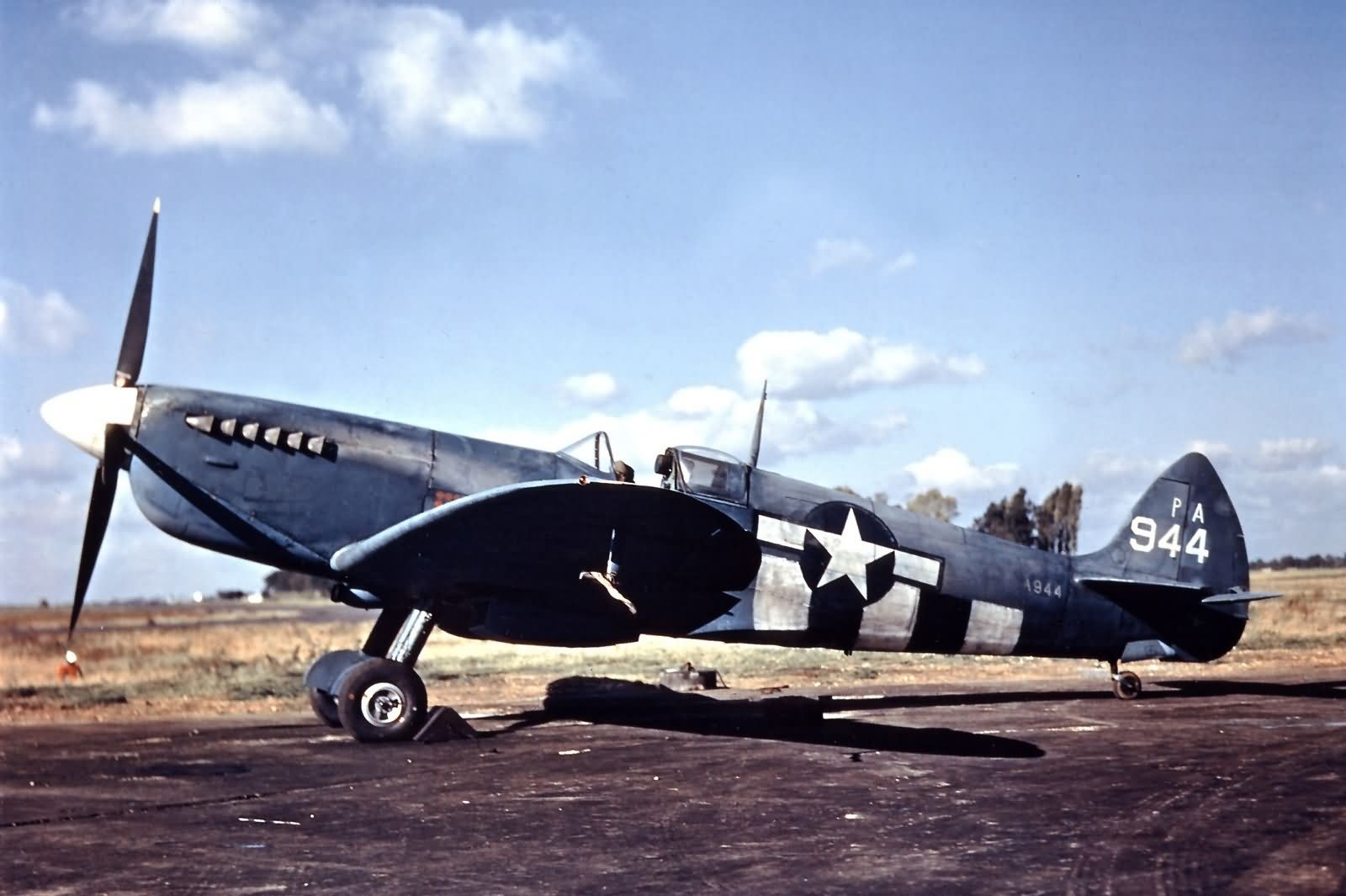Camouflage and Paint Schemes for Photographic Reconnaissance Aircraft 7th PRG
RAF’s Experience with Camouflage:
- PRU Blue: The RAF discovered that an all-over azure blue was the most effective camouflage for its high-flying, unarmed photographic reconnaissance aircraft. The specific shade developed was called Deep Sky Blue, but it became more commonly known as PRU (Photographic Reconnaissance Unit) Blue. This color provided optimal concealment against the sky when viewed from below.
USAAF Adoption and Experimentation:
- Haze Paint Development:
- Influence of RAF: Influenced by the RAF’s success with PRU Blue, the USAAF sought to apply similar principles to its reconnaissance aircraft, particularly the P-38 Lightnings that were modified for photographic reconnaissance, designated as F-4 and F-5 models.
- Haze Paint Introduction: Lockheed and the Materiel Command developed a unique paint known as Haze paint, intended for these reconnaissance Lightnings. The Haze paint was designed to reflect blue and violet shades while absorbing other colors, making the aircraft less visible against the sky. This paint was applied to most photographic Lightnings produced between March and October 1942.
Challenges with Haze Paint:
- Application and Durability Issues: Despite its innovative properties, Haze paint encountered significant problems in application and durability. These issues included difficulty in achieving a consistent finish and rapid wear in operational conditions, which led to its discontinuation by late 1942.
Transition to Other Finishes:
- Standard Camouflage: Following the discontinuation of Haze paint, F-5 Lightnings were finished in the standard Dark Olive Drab and Neutral Gray, which were also used on fighter Lightnings at the time.
- Synthetic Haze Paint (Spring 1943): By the spring of 1943, a new form of Synthetic Haze paint had been developed. This paint was applied to F-5s until the introduction of bare metal finishes at the end of 1943. The Synthetic Haze application involved:
- Sky Base Blue: A base color similar to PRU Blue, known as Sky Base Blue, was applied overall.
- Flight Blue: A very light blue shade, called Flight Blue, was then sprayed in varying degrees over areas of the airframe where shadows would naturally fall in bright sunlight. The goal was to lighten these shadowed areas, thereby maintaining a uniform blue appearance that would blend with the sky background during flight.
Operational Use and Final Transition:
- Haze Paint in Action: Several aircraft from the 7th Photographic Group at Mount Farm in the UK were finished in Haze paint. Others, which arrived in standard olive drab and gray, were repainted in Deep Sky Blue in the UK. This practice continued with some of the later bare metal-finished models received in 1944.
- Shift to Bare Metal Finish: By 1945, the operational preference shifted towards a bare metal finish for reconnaissance aircraft. This “silver” finish became acceptable for all reconnaissance missions, marking the end of the use of specialized camouflage paints like PRU Blue and Haze paint in the USAAF’s photographic reconnaissance operations.
In summary, the USAAF’s experimentation with specialized paints for photographic reconnaissance aircraft mirrored the RAF’s earlier successes but faced challenges that led to the eventual adoption of simpler, more practical finishes. The transition from camouflaged finishes to bare metal reflected both operational experience and the evolving needs of the air war.
